#upright prairie coneflower
Text


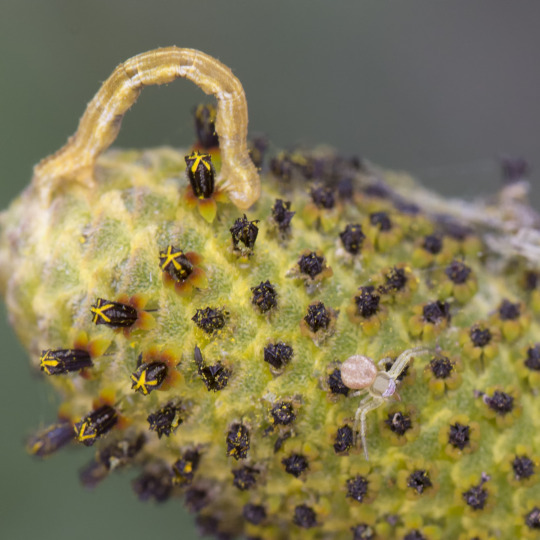
A tiny caterpillar and an even tinier flower crab spider on a Mexican Hat (Prairie Coneflower) in the wildflower garden. Cochise County, Arizona, October 2023.
#insect#caterpillar#spider#tiny#photographers on tumblr#textless#amadee ricketts#arizona#macro#mexican hat#upright prairie coneflower#fall#autumn#october#in the yard#garden#prairie coneflower
107 notes
·
View notes
Text

Mexican Hat
Ratibida columnifera
I found this lonely blooming Mexican hat plant gleaming like a beacon light amongst a sea of non-native, invasive teasel growing in a dry, disturbed, almost waste-like land near Interstate 55 in Missouri.
This sombrero-resembling prairie coneflower is native to North America, where its historic native range primarily spanned the Great Plains and surrounding areas to the west, to Missouri on the very eastern edge of its adventive range. However, there are now naturalized populations east of Missouri. It's commonly grown in gardens and can escape from them. This species prefers dry, sunny habitats such as prairies, savannas and some disturbed areas with well-drained, neutral to alkaline soils. Its flowers provide food for an array of insect species, including bees, beetles, moths, wasps, and many more.
June 20th, 2023
Arnold, Jefferson County, Missouri, USA
Olivia R. Myers
@oliviarosaline
#Ratibida columnifera#nature#botany#plants#mexican hat#mexican hat flower#prairie coneflower#upright prairie coneflower#Ratibida#Missouri#prairie#prairies#asteraceae#naturecore#prairiecore#flowers#wildflowers#wildflower#wild flowers#native flowers#native plants#flower photography#nature photography#plant#flower#summer#summer flowers#naturalist#prairie flowers
46 notes
·
View notes
Text
Bzzz!
Just some bees in my garden and in the fields and on a neighbourhood walk. :)
Featured bees include bumblebees (native), green sweatbees (native), honeybees (invasive), carpenter bees (native), and some I'm not sure about.
Featured flower hosts include bull thistles (invasive weed), rose of sharon (invasive), New England aster (native), cup plant (native), starthistle (not native), Nuttall's sunflower (native), purple coneflower (native), anise hyssop (native), white wood aster (native), swamp milkweed (native), sow thistle (invasive weed), creeping charlie (invasive), creeping thistle (invasive weed), wild rose (native maybe), wild bergamot (native), bride's feathers (native), bigleaf lupin (native maybe or invasive), and upright prairie coneflower "Mexican hat" (native species, but a cultivar).
All my photos, unedited. Don't mind the weirdness of the third last photo. It's my phone's "portrait" which I found out belatedly can have, uh, interesting results.



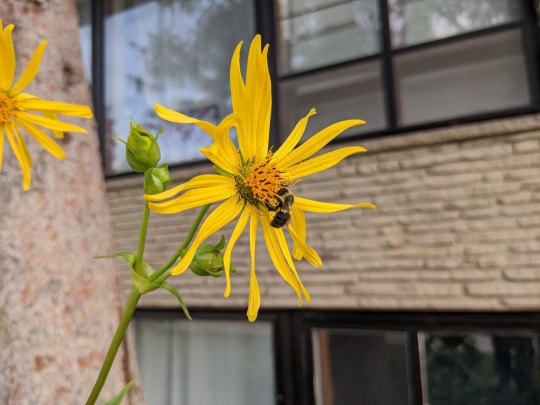



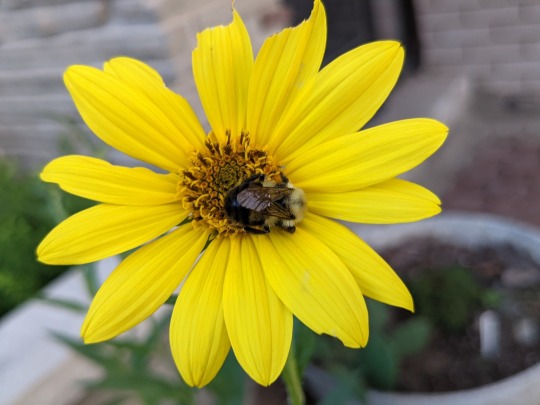




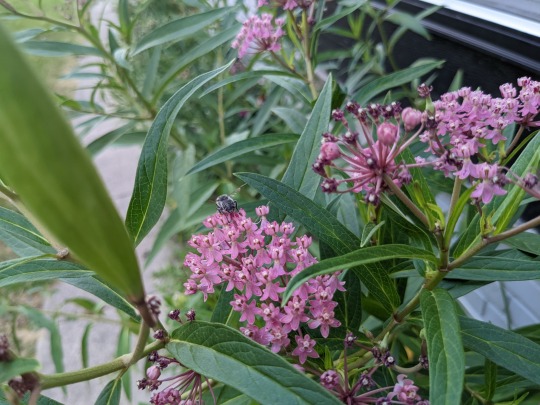

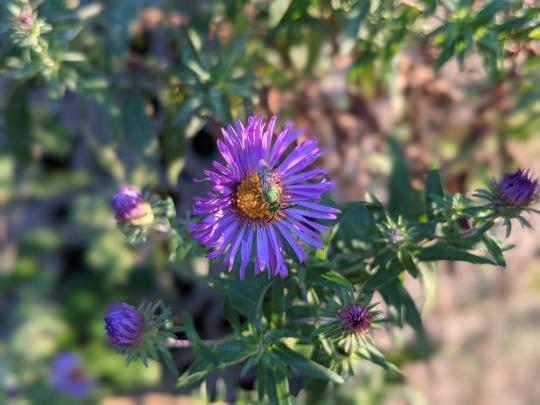

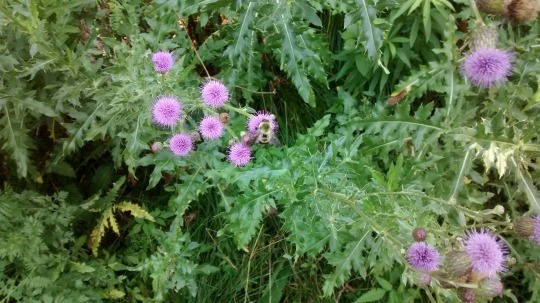
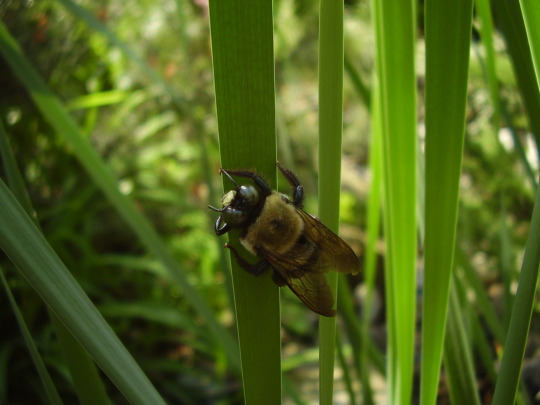

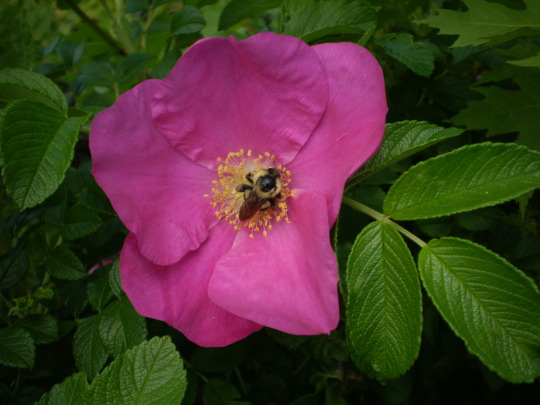

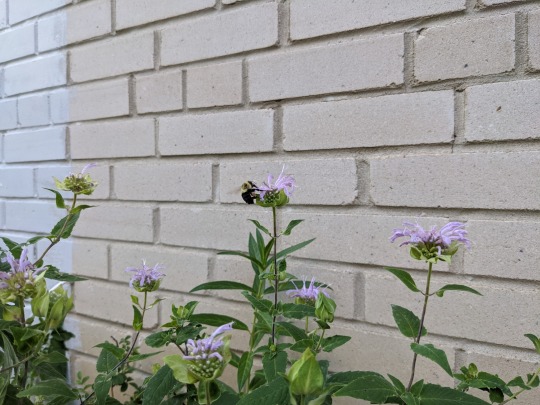


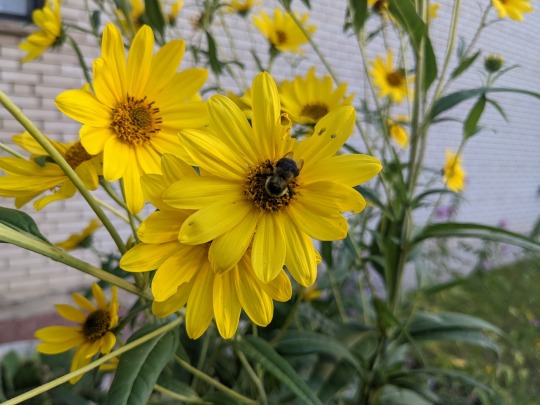
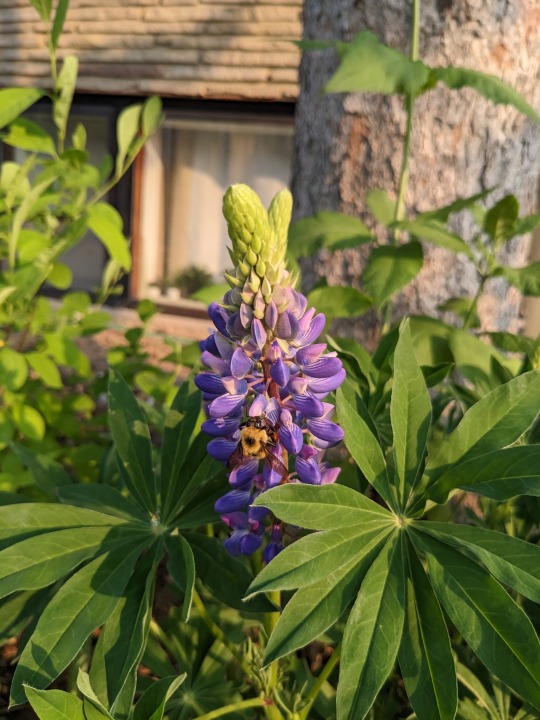

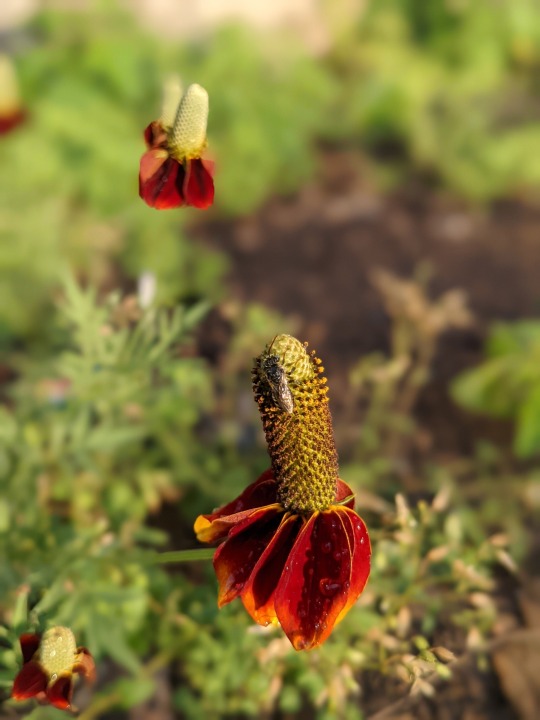
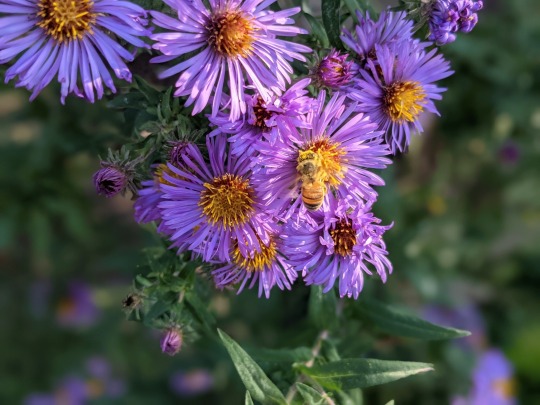

#bees#bumblebees#insects#hymenoptera#bees wasps and ants#honeybees#sweatbees#carpenter bees#my photos#photography#blackswallowtailbutterfly#bees on flowers#flowers#native North American plant species#native North American insect species#thistles#milkweed#sunflower#purple coneflower#upright prairie coneflower#swamp milkweed#lupin#bigleaf lupin#asters#New England aster#white wood aster#coneflowers#wild rose#starthistle#creeping charlie
7 notes
·
View notes
Text

Ratibida Columnaris - Amy Rice , 2018.
American , b. 1950s -
Acrylic, gouache, and ink , 10 x 8 in.
150 notes
·
View notes
Photo










World Donkey Day
When fishes flew, and forests walked
And figs grew upon thorn,
Some moment when the moon was blood
Then surely I was born.
World Donkey Day is a show of respect for one of the most enduring and respectable animals in the Equidae family. Throughout history, it has served throughout the world as both a mount and a beast of burden in some of the most challenging terrains and forbidding climates, and has done so with pride and endurance. It’s unsurprising that these beasts success is due in part to their stubborn nature, and World Donkey Day honors them for this along with their other, perhaps more laudable, traits
History of World Donkey Day
Two subspecies of the donkey, the Somalian and the Nubian, were bred together to produce what we think of as the modern Donkey. Available evidence points to the Donkey having been working alongside humanity since 4000 BCE, most likely in Nubia, as a more versatile and resilient pack animal than the ox they were presently using. Since then they have been bred and transplanted all over the world as cultures moved, and the world expanded, and can now be found just about everywhere.
They’re also the progenitors of the sterile mule, a cross-breeding of horse and donkey that results in a breed with the strengths of both. Sadly mules are almost entirely sterile, and the exceptions so rare that no breeding stock of pure mules has ever been able to be achieved, in part due to there having yet to be recorded a case of a breedable mule stallion. Strangely, there have been cases where female mules have birthed what are, for all appearances, pure horses when bred with a horse.
Regardless, these animals have played an essential part in human history and are worthy of World Donkey Day celebrating their history and their heritage.
How to celebrate World Donkey Day
The best way to celebrate World Donkey Day, depending on where you are, is merely to research these incredible beasts and the role they had to play in the world. If you’re somewhere you can take a Donkey Ride tour like the Grand Canyon or tours of certain abandoned mines then that’s an even better way to become acquainted with these adorable long-eared equines. World Donkey Day reminds us that we owe a large part of our success on this planet to these fellow travelers on the starship Earth.
Source
#World Donkey Day#WorldDonkeyDay#8 May#burro#Custer State Park#USA#I love Custer State Park#wildlife#wildflower#flora#fauna#travel#Black Hills#upright prairie coneflower#original photography#summer 2019#Oatman#Arizona#South Dakota#2014#cityscape#Route 66#international day#road trip#boardwalk#prairie#grass#tree#tourist attraction
1 note
·
View note
Photo

Upright prairie coneflower (Ratibida columnifera)
#upright prairie coneflower#Plantae#Angiosperms#Eudicots#Asterids#Asterales#Asteraceae#Rudbeckiinae#Ratibida#Ratibida columnifera#Ratibida columnaris#coneflowers#prairie coneflowers#Nikon D3400#nikonphotography#my flora#nature photography#photographers on tumblr#Black Bayou Lake National Wildlife Refuge#flora of Canada#flora of Northeastern Mexico#flora of the United States#plants used in traditional Native American medicine#flora
2 notes
·
View notes
Text
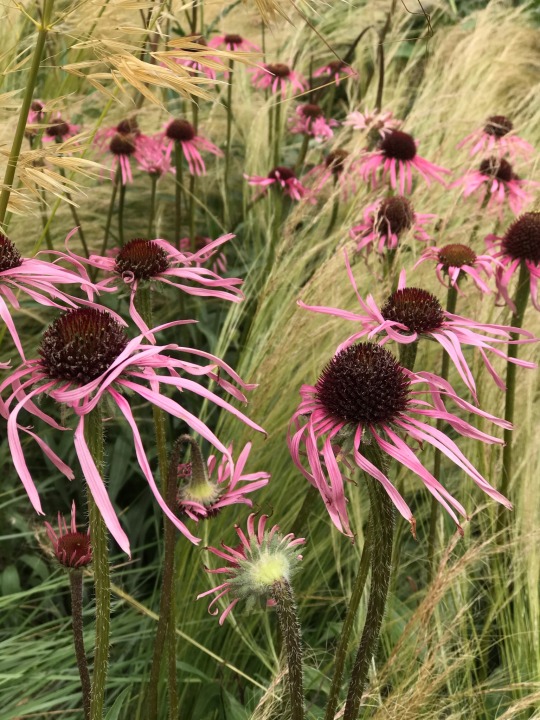
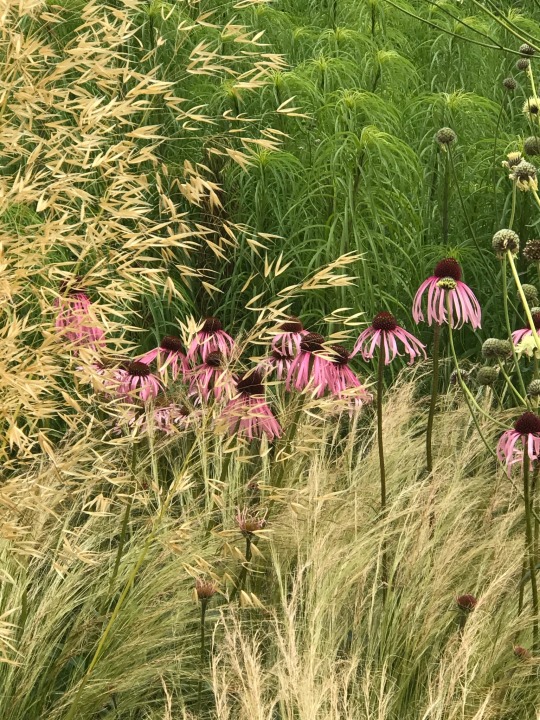
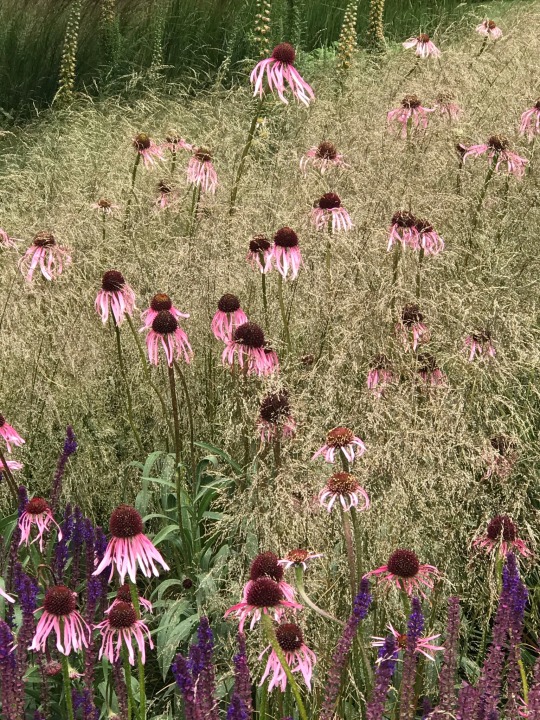

Plant of the Day
Wednesday 15 July 2020
An elegant native of the North American prairies, Echinacea pallida (coneflower) is an upright, clump-forming rhizomatous perennial. Here it blends with the ornamental grasses including Stipa gigantea (golden oat grass) and Stipa tenuissima (Mexican feather grass), the fine textures compliment the linear, pink, reflexed ray florets.
Jill Raggett
#echinacea#coneflower#pinkflowers#herbaceousperennial#herbaceous#perennial#ornamentalgrass#stipa#plants#writtledesign#mhort#gardens#horticulture#garden#rhshydehall#hydehall#essex
164 notes
·
View notes
Photo


Ratibida columnifera
Upright Prairie Coneflower, Columned Coneflower.
Wichita Mountain Short Grass ecotype, a stout yet much shorter form with yellow ligules(daisy rays) is found in every possible section of shortgrass along these mountains. It maintains shape through out, regardless of E layer horizon (illuvial mixing or perched nutrient leech layer) being closer to O(organic and A(mixed root) and more present at closer distances to the surface. It does seem to be somewhat taller(not as tall as others found in different sections of the state) when found near by water sources; with that said, it seems like this is a legit locally adapted ecotypic population with minimal transplant(common garden) variance among this population. True common garden scenarios( reciprocal habitat transplant experiments) can be useful to go further into questioning the retention of morphologically plastic(commonly changing characteristics based on physical appearance caused by environmental stress ) traits such as: height, spread, and leaf shape, and other structural changes. This is done to see if a plant from one area can function as a botanical variant of a species if traits are preserved(non-plastic) once exposed to a new environment or series of environmental stresses; or rather hyper locally adapted ecotypes where morphology is set in evolutionary stone may be under scrutiny as a potential var. and maybe even subspecies( depending on many other factors).
These photos where taken from two separate locations: shortgrass basin and volcanic lake’s edge.
34 notes
·
View notes
Photo
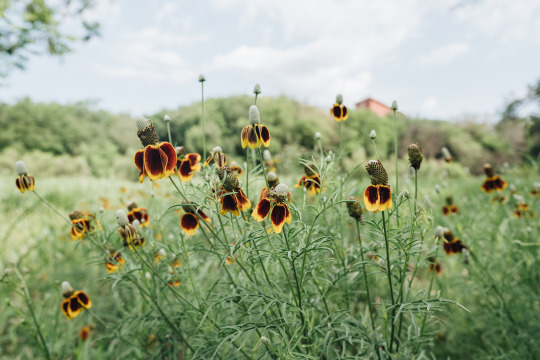
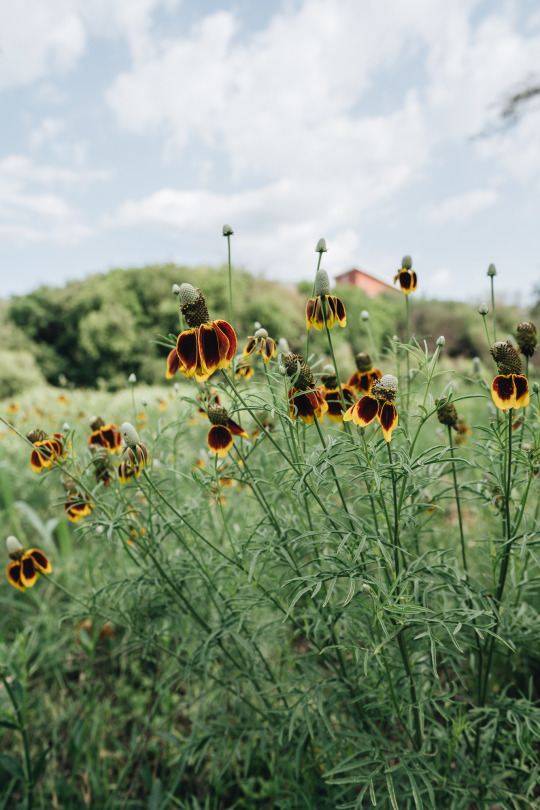

Ratibida columnifera, commonly known as upright prairie coneflower or Mexican hat
3 notes
·
View notes
Text
Dotted Blazing Star; Dotted Gayfeather

Scientific Name: Liatris punctata
12-24”; full sun; dry sandy or gravelly soil, loam, or light clay; drought tolerant
Description: This beautiful and equally rugged, warm-season perennial is among the latest plants to sprout new growth in the spring, but that late start makes for a well-timed show of bright orchid spikes in late summer, when the native northern Colorado landscape is otherwise largely a sea of yellowing grasses and yellow blooms. Sometimes you’ll come across a specimen that sends up a single flowering stem, but more often it grows in upright clumps of unbranched stems, each terminating in a flower spike that can be up to 12” long. The flower spikes are sometimes slender and sometimes rather stout, and are densely packed with small but vibrant pinkish-purple blooms. Narrow, pointed leaves cover the entire length of the stems, from the base of the plant right up through the flower spikes, where they intersperse shorter versions of themselves with the blooming bits. Tiny glands in the leaves make the leaves appear dotted, a distinctive feature of the plant to which its common names often refer. The scientific name also makes note of this feature with the Latin word punctata, meaning “spotted.” (The genus name Liatris is a Latin word whose meaning is no longer known.) This is a slow-growing but long-lived perennial, persisting many years in the wild and usually performing well for many years in dry gardens. Its deep root system gives it excellent drought tolerance. Established specimens have thick taproots that may penetrate more than 16 feet deep into the ground. Roots also develop rhizomes (underground lateral stems). New plants arise both from these rhizomes and seeds blown from mature flower spikes. Grown from seed, the plant may take 3-4 years to reach a size that will begin producing blooms. This species is best planted in the garden in early spring while the plant is still dormant. It will not get going with new growth until soil is warmer, so give it some time. Dotted blazing star needs very little water. Plant in a non-irrigated garden area with other plants that prefer dry soil, such as its companion plants in these demonstration gardens -- a few examples being Lewis flax, Indian ricegrass, prairie coneflower, rabbitbrush, and fringed sage. After transplanting pot-grown seedlings in the garden, water them in well, and then don’t water again until the soil is dry at least 2” below the surface. Let soil dry out in this way between subsequent waterings, and after the second growing season, stop supplemental watering. Established plants should only be watered during periods of drought (no precipitation for 8 weeks or more). The flower spikes make terrific, long-lived additions to cut flower arrangements, but leave some on the plant to allow seeds to mature, feed the birds, blow about, and start new plants.
Height: 24”
Spread/Spacing: 12” spread; plant 24-36” apart.
Exposure: Full sun
Soil Tolerances: Especially likes sandy soil, but also grows in dry chalky soil or dry clayey loam. Needs well-drained soil.
Soil Moisture: Dry. Good drainage is important. Roots will rot in soils that stay wet.
Water: Low; excellent drought tolerance.
Bloom: Jul-Oct; Pink to purple, orchid-purple
Value to Pollinators: Pollen and nectar for bees, butterflies. Pollinated by bees. Attracts hummingbirds.
Deer & Rabbit Resistance: Usually not bothered or eaten by deer or rabbits, but elk or pronghorn may indulge.
Where they like to grow: Dry, open sites in short-grass prairie, plains, foothills, and shrublands. In northern Colorado, often grows in communities with blue grama, Indian ricegrass, fringed sage, rabbitbrush, and mountain mahogany.
Photo credit: Madeline Maher
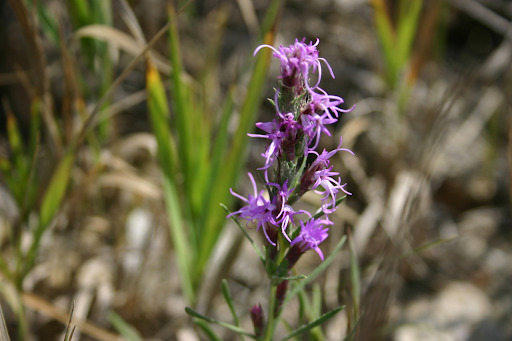
2 notes
·
View notes
Text
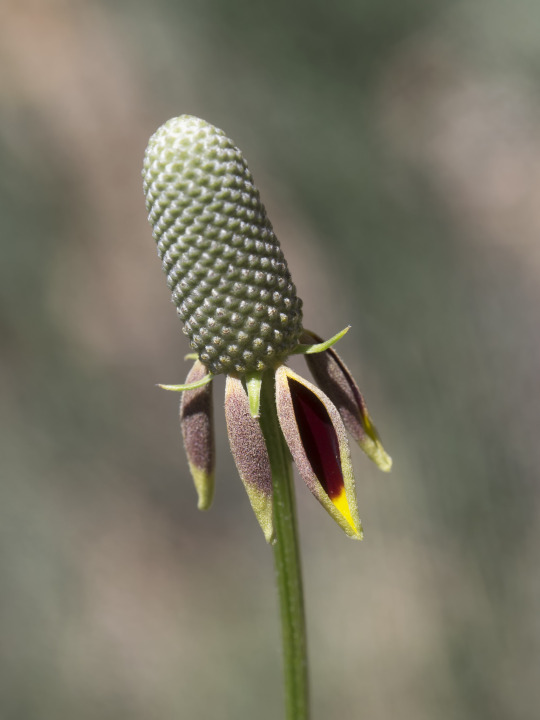
#flower#macro#arizona#spring#photographers on tumblr#textless#amadee ricketts#mexican hat#prairie coneflower#in the yard#garden#upright prairie coneflower#june
68 notes
·
View notes
Note
🍒 - what’s your favorite flower?
i cant remember if i’ve ever talked about my favorite flower,,, i probably have but |D
I really!! am fond of Hibiscus flowers tbh. probably cause i grew up around them for a period of time = v= back when my mom was still married to my dad, he was stationed at a military base on hawaii, so we lived there for a while! and i have a distinct memory of walking back from the bus stop home and picking hibiscus flowers from this random person’s yard hfsdhjsdfkhjdsf
also!! Spider Lilys are so??? cool, we had one grow in my yard once!! and then next year i think there were two, but there havent been any more since unfortunately :
im also fond of upright prairie coneflower’s (which i just called painted ladies and didnt learn their real name after some googling lmao) cause they were also a flower i grew up around!!
1 note
·
View note
Text
Planted my new arrivals, staked my sunflowers, asters, and white sage so they stop growing into the sidewalk or over top of other plants that would also like to have sun in that area, thank you very much! Also among my arrivals is yet another sunflower species, but you don’t understand! I needed it! It’s Helianthus annuus! The one with the seeds, and it’s not a cultivar, it’s just the regular form! *ahem* Anyway, the rocky mountains bee plant, white sage, fringed aster, and northeastern black cherry tomato should give it a run for its money in that area. And it’s an annual, so each plant in the spring is new, it doesn’t spread by rhizome like the perennial sunflowers do.
Watered my whole garden, which I can do now because I have use of my hose, and inundated my wet plant areas, which allows them to not just survive but thrive. There’s a robin that comes around now to grab the worms that come up when I do this. Earth worms are not good for native North American plants, so it’s a symbiotic relationship, and I’m pretty sure the robin thinks I’m intentionally making the worms come up for her. She keeps looking at me expectantly every day. lol
After losing the only two arctic raspberries that popped up in the spring, I am trying new plants in a different area. Fingers crossed or else I will find it’s just not meant to be. Also got replacement dwarf fireweeds after some animal or other dug the other up and killed them. Sometimes you just have to keep trying. Like with my wood lilies. First two attempts failed before the third finally stuck. In fact this year I’m on my third attempt with (regular) fireweed, tufted hair grass, early blue violet, and upright prairie coneflower, and on my second attempt with several others. My roundheaded bushclover is doing fine in its second year after two failed attempts to grow it in previous years. So I’ll have hope that this year’s the year for them. Sadly my mountain blue-eyed grass did not thrive and eventually died. Haven’t been able to find a replacement yet, but I have a different area in mind for when I do and hopefully that will be the place for it.
I collected some beans from my rocky mountains bee plants and some pods from my swamp milkweed. Then I got tired (because it’s been very warm today) and just chilled on the grass watching the insect activity on my flowers. Tomorrow I’m going to gather some greens from my garden and go to the ravines for some more milkweed pods. I will then cook them with the shrimp I found in my freezer.
8 notes
·
View notes
Photo
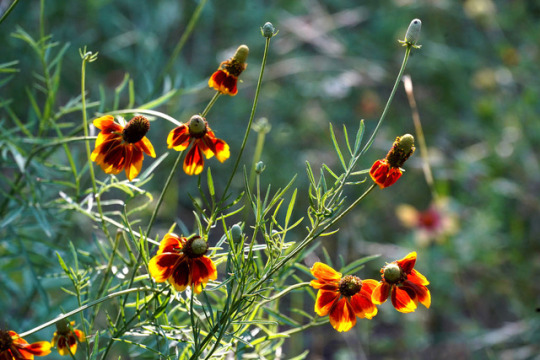
Mexican hat (Ratibida columnifera) by zug55 Mexican hat (Ratibida columnifera) Prairie coneflower, Upright prairie coneflower, Red-spike mexican-hat, Long-headed coneflower, Thimbleflower Asteraceae (Aster Family) Austin: Barton Creek Greenbelt May 26, 2018 www.wildflower.org/plants/result.php?id_plant=RACO3 https://flic.kr/p/24TFHLo
1 note
·
View note
Photo
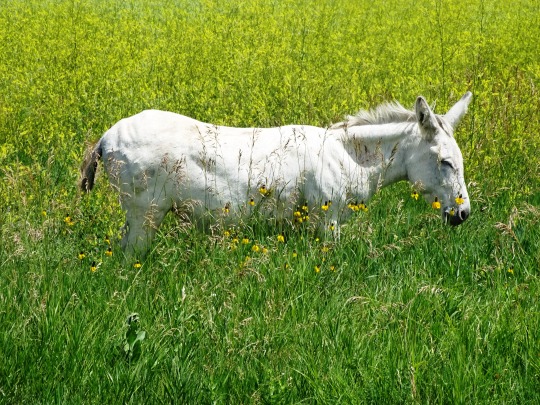
Enjoying the Flowers
What do you think about my pic?
#upright prairie coneflower#wildflower#Ratibida columnifera#Mexican Hat#flora#fauna#begging burro#Custer State Park#I love Custer State Park#one of my favorite parks#original photography#summe 2019#travel#vacation#nature#landscape#countryside#Black Hills#South Dakota#landmark#tourist attraction#Midwestern USA#Wildlife Loop Road#donkey#Equus africanus asinus#flower meadow#grass#yellow flowers#What do you think about my pic?#animal
2 notes
·
View notes